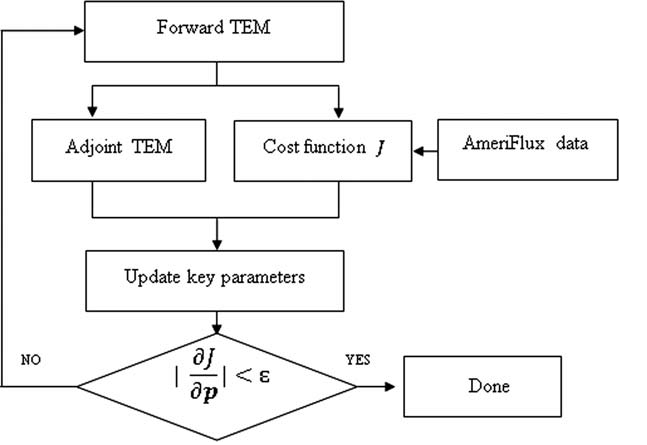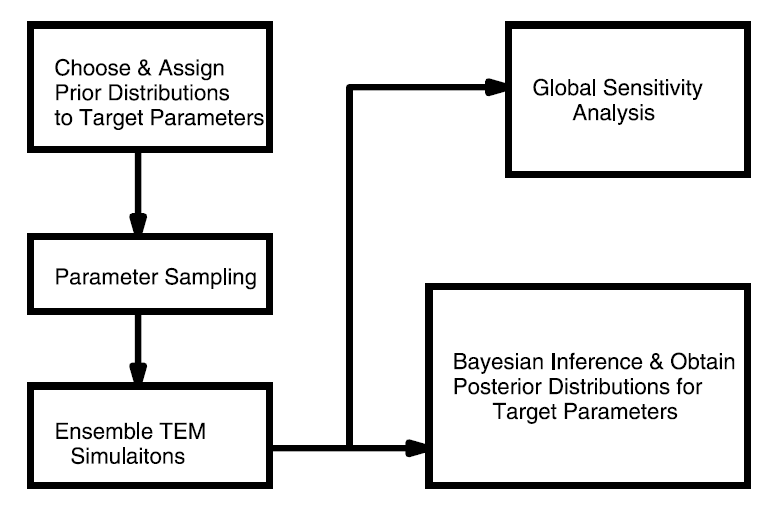Global sensitivity analysis and Bayesian inference framework
Our framework was based on Bayes' theorem: Pr(θ|V) Pr(V|θ) Pr(θ) where Pr(θ|V) is the posterior after Bayesian inference conditioned on available observations V (hereafter the bold letter indicates a matrix). θis the matrix of parameters and TEM outputs (e.g., GPP) and V is the matrix of observation or the matrix of the differences between prior simulations and the corresponding observations, whose element Vij denotes the type j data V(·)j at time step i. Pr(V|θ) is the likelihood function, which will be calculated as a function of TEM Monte Carlo simulations and the available eddy flux data. Pr(θ) is the prior of the TEM parameters and our estimated C fluxes (e.g., GPP, RESP and NEP) and EET. To address our research questions, we first conducted TEMensemble simulations with parameter priors. Second, the likelihood function Pr(V|θ) was calculated based on model simulations and observations. Third, the global sensitivity analysis was applied, and fourth, the Bayesian inference was conducted.

Adjoint code for a model could be either automatically generated using existing software, or generated manually, i.e., line-by-line. For example, the Tangent-linear and Adjoint Model Compiler (TAMC) [Giering and Kaminski, 1998], a software tool for generating first-order derivatives of models written in FORTRAN, has been widely used for atmospheric [Henze et al., 2007] and oceanic modeling [Marotzke et al., 1999; Stammer et al., 2002]. Here we manually developed the adjoint code directly from TEM model codes (where model ordinary differential equations have been discretized) with an attempt to better handle the processes in the model. The method was developed and applied for regional carbon studies (Zhu and Zhuang, 2013, 2014).
